Over a 5-year period, 1300 seabirds of four species (Shag, Kittiwake, Razorbill and Guillemot) were tracked to see where they went when foraging from their breeding colonies. These data were then applied to all breeding colonies around the UK to produce predictive maps of marine use by these four species. these predictive maps could be used by industry and government to ensure that important seabird feeding areas are not harmed by over-fishing, mineral extraction, pollution or developments such as windfarms and oil or gas extraction.
![]() To track the birds, GPS tags were attached to adult birds during the breeding season (May- July) including 230 Shags, 464 Kittiwakes, 178 Guillemots and 281 Razorbills, breeding at 13, 20, 12 and 14 sample colonies respectively. GPS tags do not transmit data so they have to be removed from the bird after a period of time and then the data are downloaded.
To track the birds, GPS tags were attached to adult birds during the breeding season (May- July) including 230 Shags, 464 Kittiwakes, 178 Guillemots and 281 Razorbills, breeding at 13, 20, 12 and 14 sample colonies respectively. GPS tags do not transmit data so they have to be removed from the bird after a period of time and then the data are downloaded.
Wakefield, E. D., Owen, E., Baer, J., Carroll, M. J., Daunt, F., Dodd, S. G., Green, J. A., Guilford, T., Mavor, R. A., Miller, P. I., Newell, M. A., Newton, S. F., Robertson, G. S., Shoji, A., Soanes, L. M., Votier, S. C., Wanless, S. and Bolton, M., Breeding density, fine-scale tracking and large-scale modeling reveal the regional distribution of four seabird species. Ecol Appl. Accepted Author Manuscript. doi:10.1002/eap.1591
The species and their maps:
Shag:
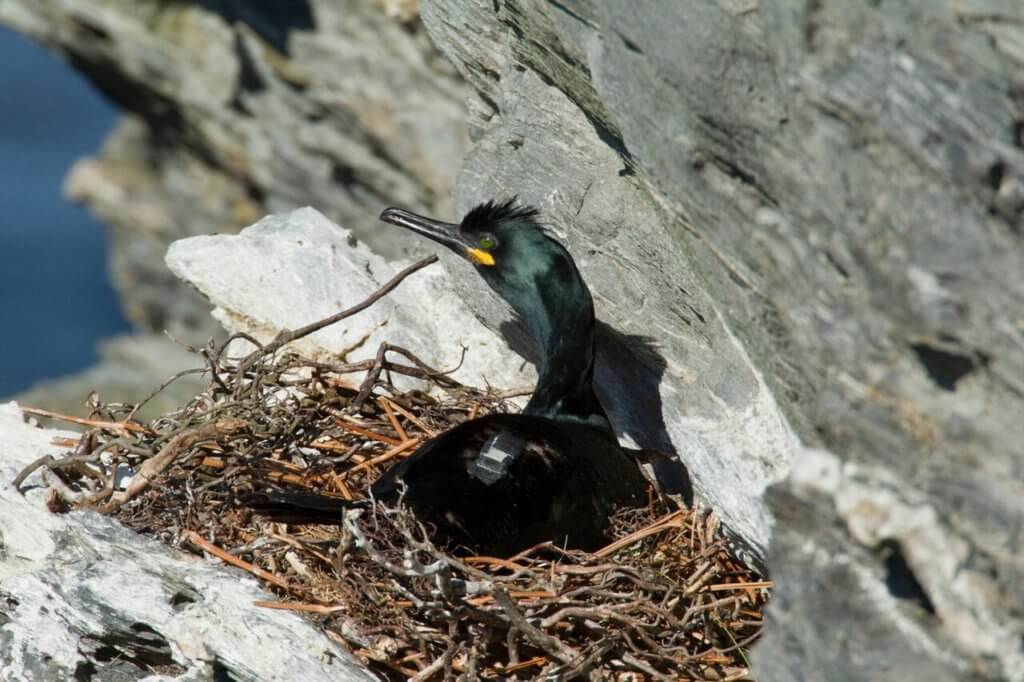
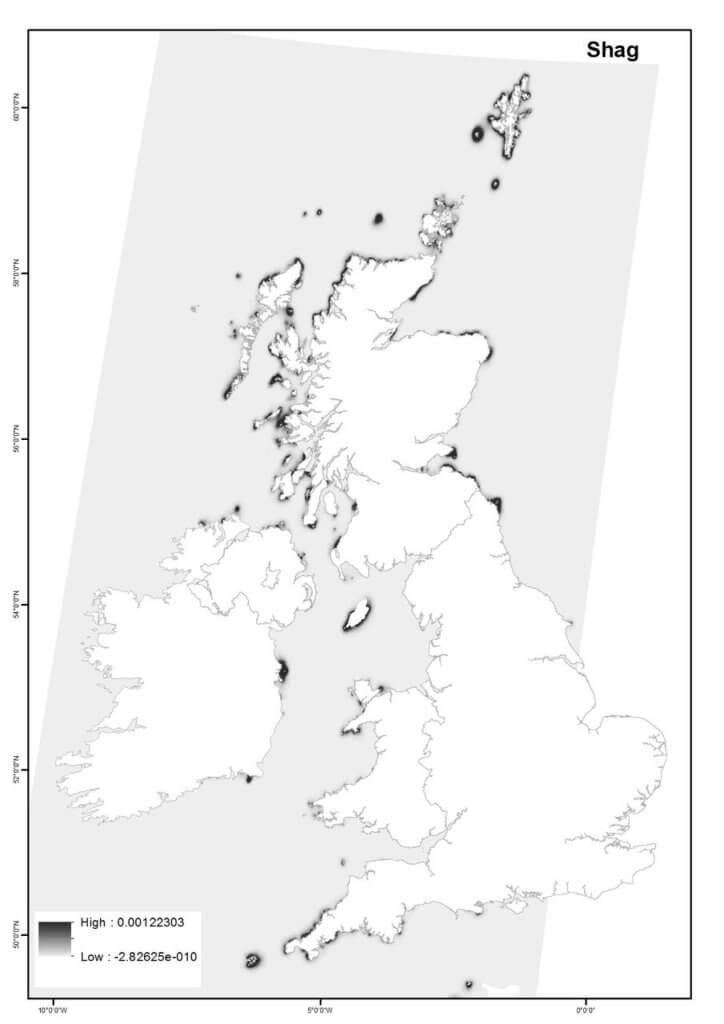
Kittiwake:

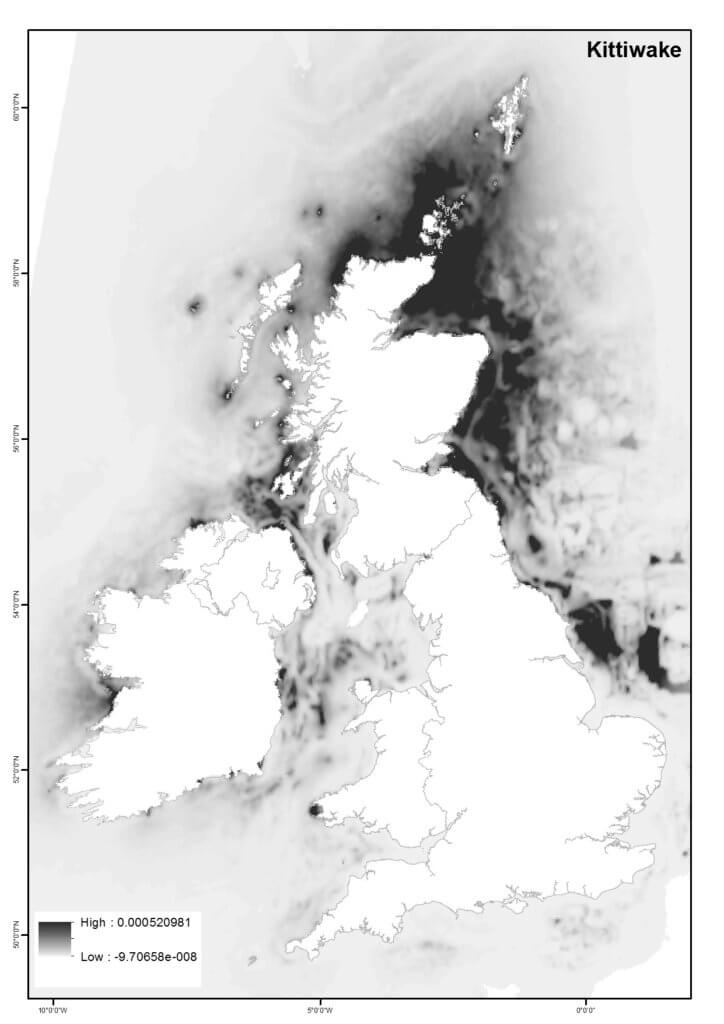
Guillemot:

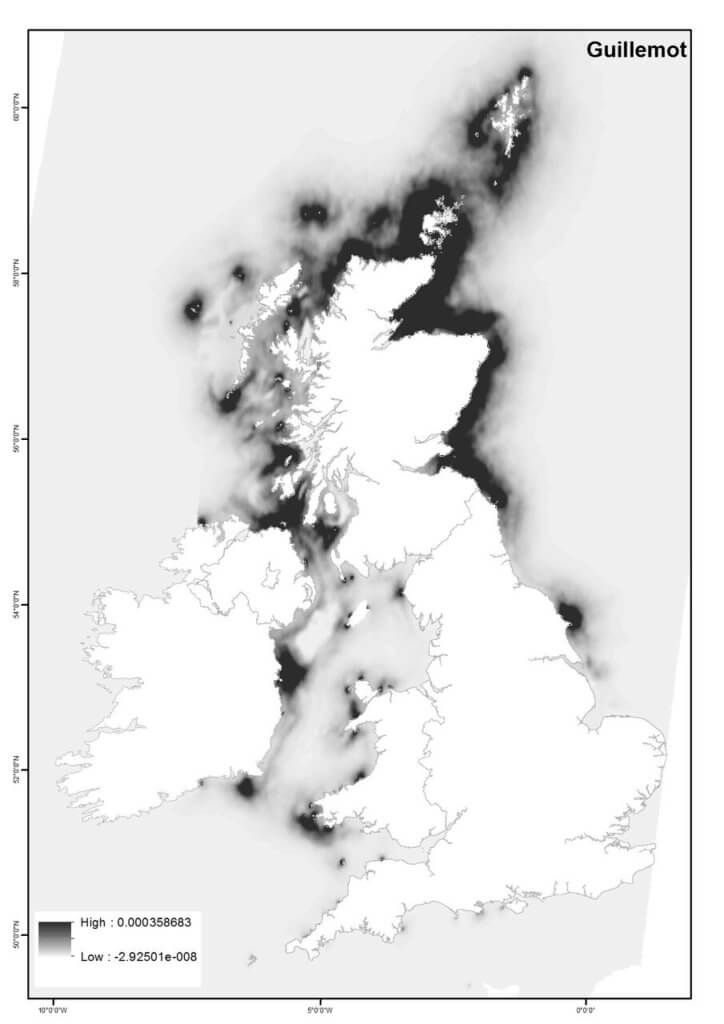
Razorbill:
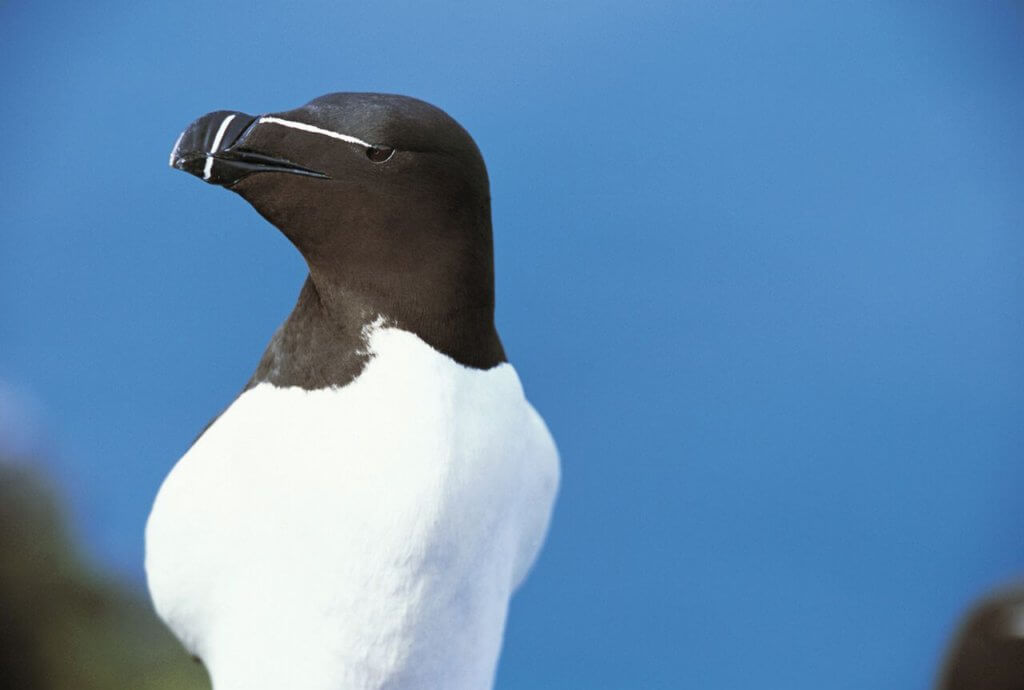
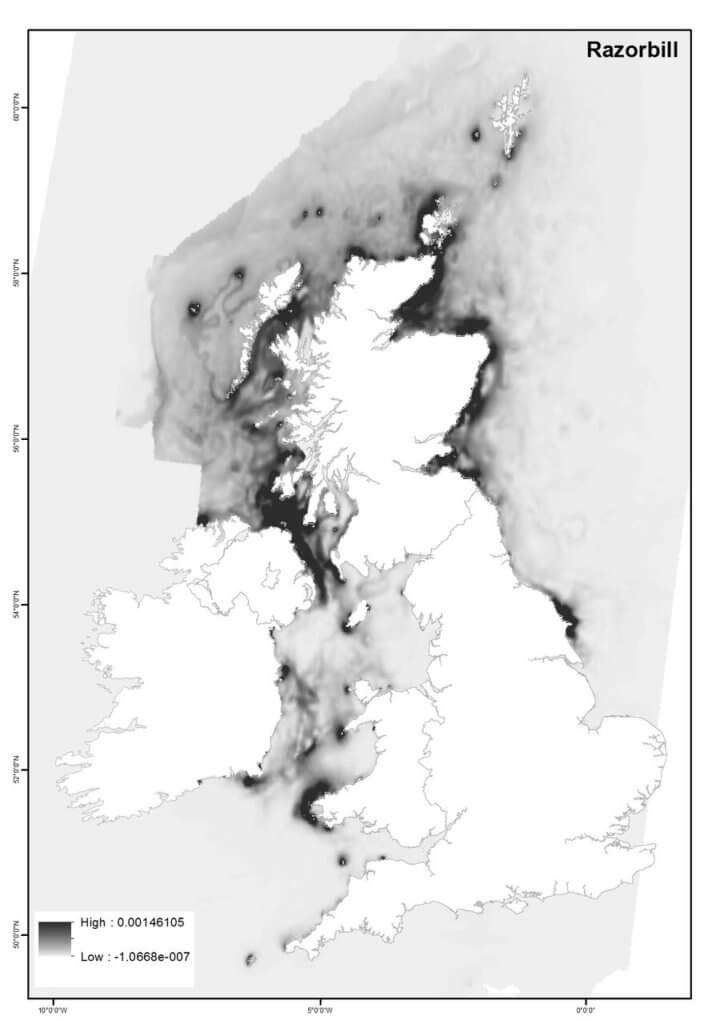
Dr Ellie Owen, RSPB conservation scientist, said: ‘The sight and sound of hundreds of thousands of seabirds flocking to our shores is an amazing natural spectacle and something that we must help protect for future generations to enjoy. The methods used in this study could be applied to other seabird species, to show where they go at sea. This will be an invaluable tool in helping to protect seabirds as it will greatly improve our ability to assess the likely impacts on breeding seabirds of offshore wind farms, oil spills and other potentially harmful activities in our increasingly industrialised seas.‘.
Dr Mark Bolton, RSPB principal conservation scientist, said: ‘Our rich and diverse marine environment makes Britain and Ireland among the greatest areas in the world for seabirds and this new research is further evidence of just how important our seas are for seabirds and their chicks during the breeding season. In order to strengthen this research and our predictions, there is an urgent need for a complete seabird census which will provide an accurate and up-to-date estimate of the size of our seabird breeding colonies.’.
Dr Ewan Wakefield, lead author of the research, said: ‘Many seabirds are at the top of the marine food web. They feed on sandeels and other small fish but that prey is declining because of human pressures, including climate change. The result is that thousands of seabird chicks are dying each year because their parents can’t feed them.
For the first time, this study provides us with a full map for each breeding colony of the feeding areas for some of our most important seabird species. That means we can now protect the places these birds catch the fish they need to feed their hungry chicks, securing the future seabird generations of these amazing creatures. If we can reverse seabird declines we can be fairly sure that we’re getting things right for the fish and other marine life below the surface of the sea.‘.
Collaborative partners: The Centre for Ecology and Hydrology, University of Liverpool, University of Oxford, University of Exeter, University of Glasgow, Joint Nature Conservation Committee, Plymouth Marine Laboratory, Birdwatch Ireland. Sule Skerry Ringing Group.The partners involved in the FAME project (SEO, SPEA, LPO, Birdwatch Ireland, WaveEC, Uni of Minho).
Funders: EU Interreg Fund through its Atlantic Area program, Natural Resources Wales, Scottish Natural Heritage, Joint Nature Conservation Committee, Natural England, Marine Scotland, Argyll Bird Club and Natural Environment Research Council.
[registration_form]
“these predictive maps could be sued by industry and government”… I think this is a typo but, sadly, I’m not sure.
contrarietydes – ha ha! I’ll change that! thank you.